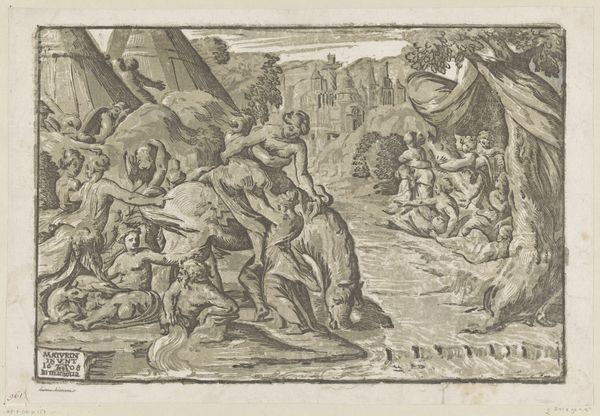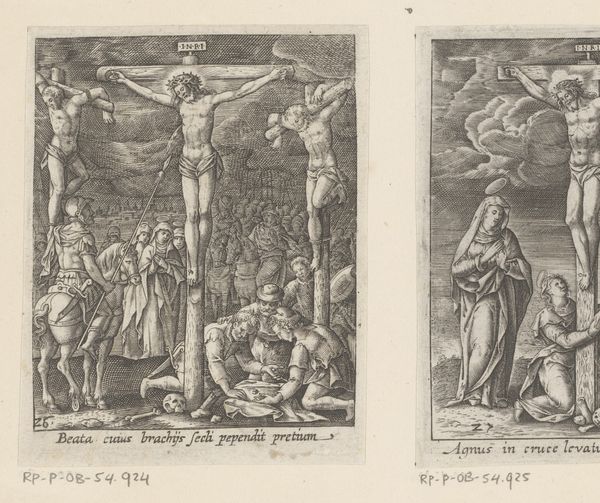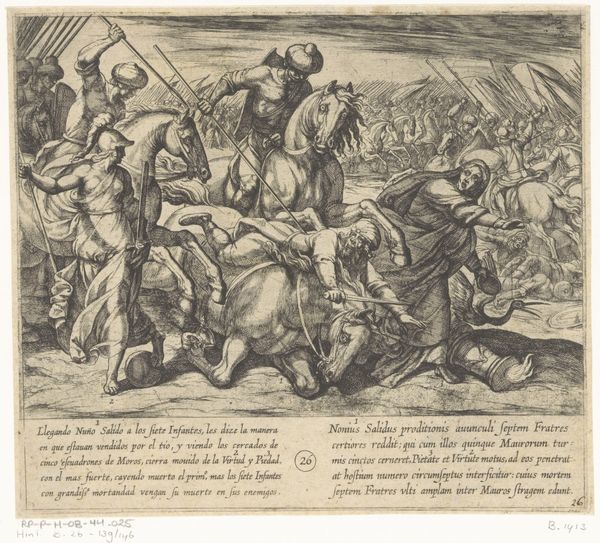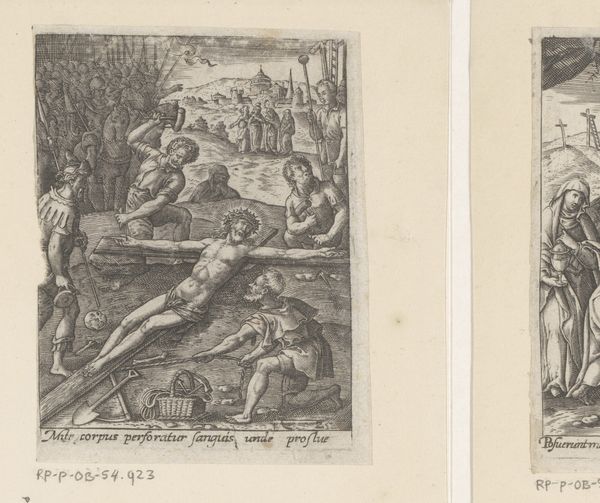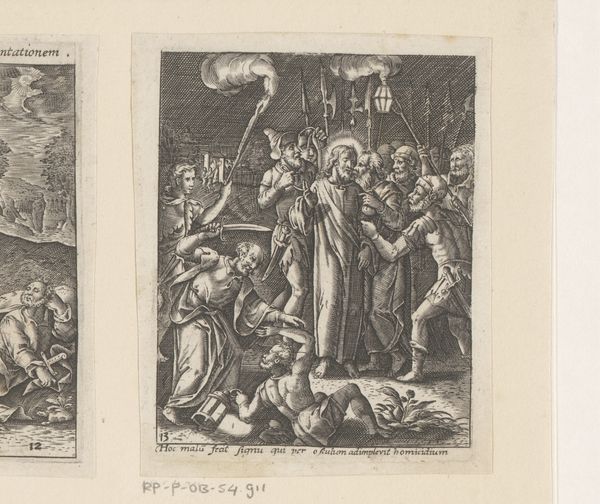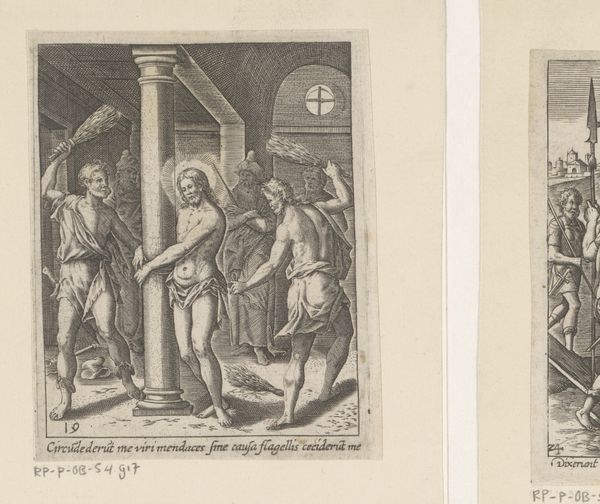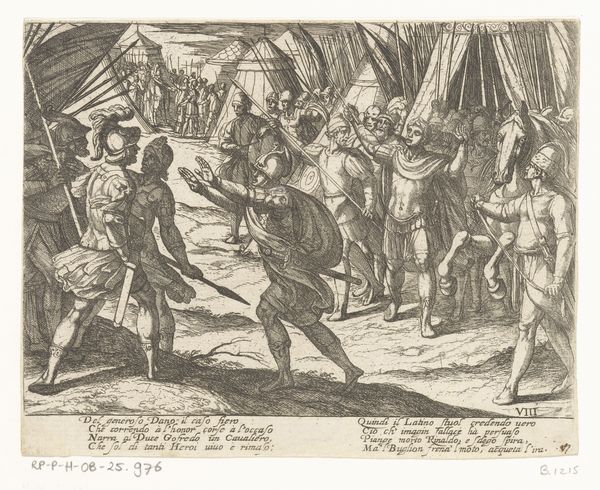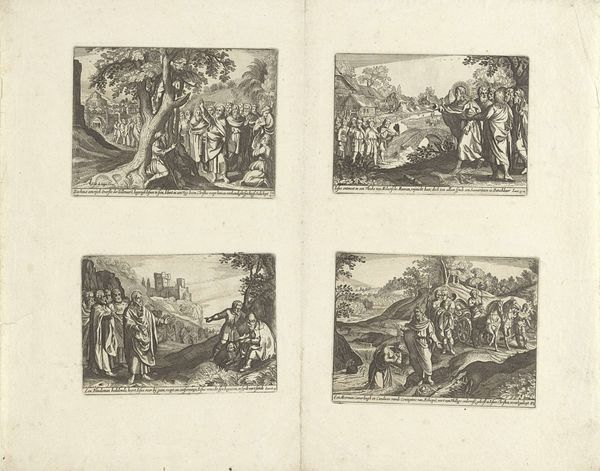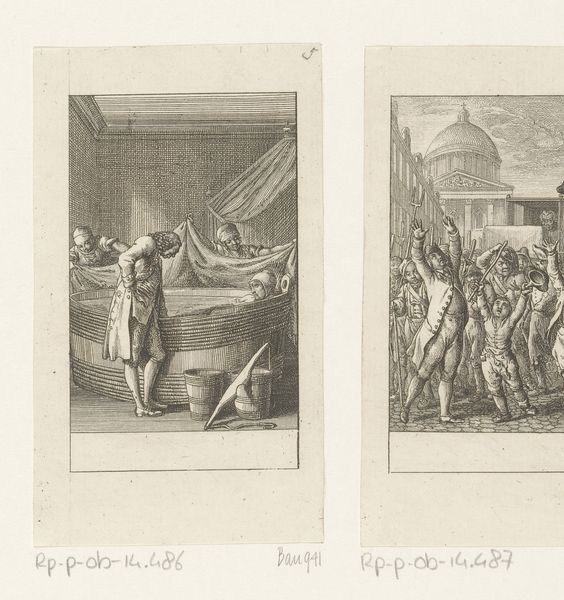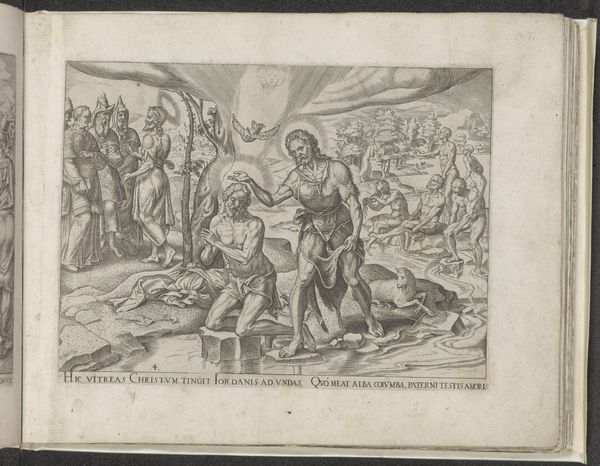
print, engraving
# print
#
figuration
#
11_renaissance
#
history-painting
#
northern-renaissance
#
engraving
Dimensions: height 89 mm, width 72 mm
Copyright: Rijks Museum: Open Domain
Curator: Here at the Rijksmuseum, we have an intriguing engraving from the late 16th or early 17th century, called "Christus wordt ontkleed"—"Christ is stripped." The print depicts the moment Christ is deprived of his garments before the crucifixion. Editor: The rawness of it really gets to you. The artist has used crisp lines to create a bustling scene of figures around Christ. His vulnerability is so striking against the dark mood. Curator: This work reflects a broader tradition of Northern Renaissance art, characterized by its intricate detail and narrative focus. Notice how every figure around Jesus plays into the depiction of brutality that feels really deliberate. Editor: It feels staged. There is definitely commentary here about power dynamics. The soldiers and onlookers all vying for dominance, surrounding Christ, as if the act of undressing him symbolizes a complete stripping away of his dignity and authority. And note the almost casual violence. Curator: Exactly, but it’s not just about that physical humiliation; there's also the symbolic significance of clothing in religious art. Taking away clothes has very early roots when defining shame and creating hierarchies between good and bad, sacred and profane. So this engraving doesn't only communicate violence but a break with an earlier time. Editor: Definitely. And it brings to the fore an old struggle we still know now: how societies attempt to humiliate and dehumanize individuals. You cannot but reflect on those in our modern society that, by some structure, are made to carry a sense of shame. Curator: A powerful observation, and one of the things that this artwork reveals and revives time and time again. Thank you! Editor: Yes, a painful history, shown and prolonged until today through the language of symbol and dress.
Comments
No comments
Be the first to comment and join the conversation on the ultimate creative platform.
